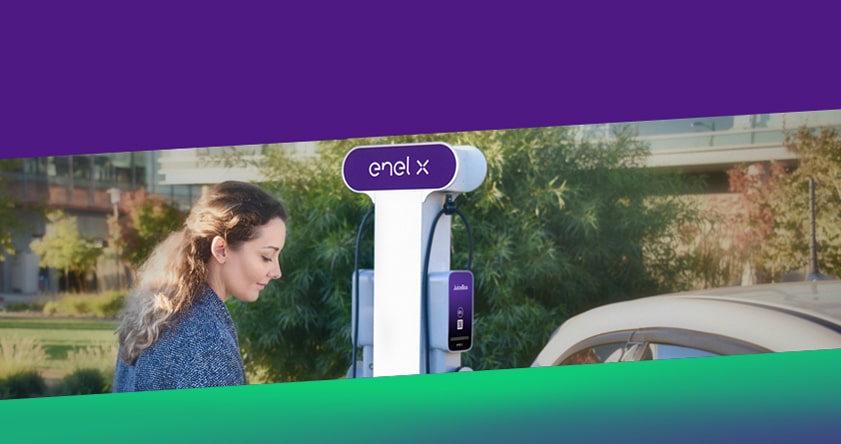Don’t Tally EV Sales Numbers, Keep an Eye on Electric Vehicle Market Share

It’s been nearly a decade since the first mainstream plug-in cars, like the Nissan LEAF and Chevrolet Volt, first went on sale. In that inaugural year, 2011, merely 17,425 US car buyers purchased an EV or plug-in hybrid. It was an ultra-niche market made up of the earliest of early adopters.
Those buyers represented about two-tenths of one percent of the 12.7 million automobiles purchased in that year. Have EV sales changed much in the past eight years? The short answer is: absolutely.
By 2018, the ranks of electric car buyers swelled to more than 1 million strong. And in 2019, the country’s EV market ballooned to nearly 330,000 sales in a single year. However, before EV fans and zero-emission advocates take a victory lap, consider that those 330k sales in 2019 still represented less than 2 percent of the new-car market. The other 98 percent of buyers purchased gas or diesel vehicles.
The state of EVs in the US, and around the world, should not be viewed in absolute sales numbers. What counts more is market share—the percentage of battery electric vehicles and plug-in hybrids compared to the take-rate for internal-combustion vehicles.
There are a lot of moving parts to consider. For example, as the EV market expanded in recent years, the number of total vehicle sales in the US experienced growth. Auto sales eclipsed million in 2015, where it held firm through last year. EV numbers also go up and down. So again, what’s important is market share—the sales of EVs and plug-in hybrids relative to purchases of gas-powered cars.
Regardless, we are at least a few decades away from the clean-air, zero-emissions utopia envisioned for the future—when 100 percent of car sales are purely electric. By many accounts, it will take at least until about 2050. Bloomberg New Energy Foundation forecasts that EVs will account for 58% of global new-car sales by 2040.
Plotting our progress requires a more nuanced look at electric vehicle market share and the many factors that influence the percentage. The list includes the number of models available, the relative purchase price of those models; the size of the overall vehicle market; the diverse geographic landscape of EV legislation and incentives; and relative fuel prices of gasoline versus electricity.
2018, A Watershed Moment for Electric Vehicles
While the overall passenger vehicle market steadily expanded from 11.5 million in 2010 to more than 17 million by 2015, EV sales have had ups and downs—including year-over-year declines in 2015 and 2019. But sandwiched in between those years was 2018 when the Tesla Model 3 was introduced. In that year alone, EV sales grew by 81 percent to 361,307 units.
Nonetheless, over the past decade, the all-important market-share number has steadily increased. EV sales in the US were fractions of one percent from 2011 to 2016—finally breaking through the one-percent line in 2017. Since then, the EV market share has remained steady at around two percent.
A single halo product can change everything. In 2019, the Tesla Model 3 sold in nearly the same quantity as all other plug-in cars combined. The momentum continued into 2020 when the effects of the pandemic on the economy took hold. The Model 3 this year became California’s top-selling passenger car—outperforming top luxury models like the BMW 3-Series as well as ultra-popular cars like the Toyota Camry and Honda Civic.
Why California Outpaces Other States in EV Adoption
The Model 3’s success is most notable in California. So let’s consider two representative states: California and Arkansas. In California, the EV take rate is at nearly 8 percent. In some Bay Area zip codes, BloombergNEF reports that electric vehicle ownership represents over 20 percent, and Pacific Gas and Electric recently noted that one out of four homes in their service territory own an electric vehicle. Meanwhile, in Arkansas, the EV share is 0.35%. How do you explain the discrepancy?
First of all, California has been aggressively pursuing zero-emission-vehicle mandates for decades. California’s ZEV mandate requires automakers to make zero-emission vehicles 22 percent of total sales by 2025. That’s ambitious. Moreover, 13 other states have adopted the Golden State’s ZEV and emissions rules.
California’s economy also features high gas prices, generous EV purchase incentives, and median incomes at nearly $70,000. Contrast that with Arkansas, which doesn’t require zero-emission vehicles and doesn’t offer state-based EV purchase credits or rebates. Furthermore, the state faced headwinds from low gas prices and a median income that’s $20,000 lower than California.
While it’s tricky to compare EVs across diverse global markets, the relative commitment from government entities is a significant factor. China’s strong incentives and mandates helped elevate electric vehicles to 4.5% of the country’s auto sales. But the growing world leader in electric vehicle market share and sales is Europe, which has the world’s most stringent emissions standards for any vehicle type.
Unlike California and China, Europe doesn’t have an explicit zero-emission vehicle mandate. Instead, the EU requires that carmakers meet strict CO2 standards, which are impossible to hit unless car companies sell more plug-in cars. In April 2020, battery-electric cars and plug-in hybrid vehicles accounted for an unprecedented 17% of total vehicle sales across Europe.
Backed by strong EV sales in Europe, Hyundai became the first legacy automaker to see its EVs represent a bigger share of its global sales than the company’s internal combustion vehicles. Hyundai’s EVs are 9.9% of auto sales, while its gas- and diesel-powered vehicles are 8.9%.
The dramatic rise in EV market share in Europe can largely be explained by the coronavirus pandemic. As people stay home under lockdown measures and suffer from the economic downturn, consumers are holding off on car purchases. Across the continent, general auto dealerships have seen sales drop by about 78 percent. However, sales of electric vehicles and plug-in hybrids fell by 29 percent.
The unpredictable events of 2020 are anything but normal. But the upward trend for increased growth in EV market share is quickly becoming the new normal. We’ve been through a decade of relatively tepid sales of EVs in the US. Looking back on those years, it’s not surprising that EV market share was a fraction of a percent.
But now we’ve seen what happens when the economic winds shift, environmental impacts are priced in, and when consumers are offered dozens of affordable electric options. The EV market share hits an inflection point.




